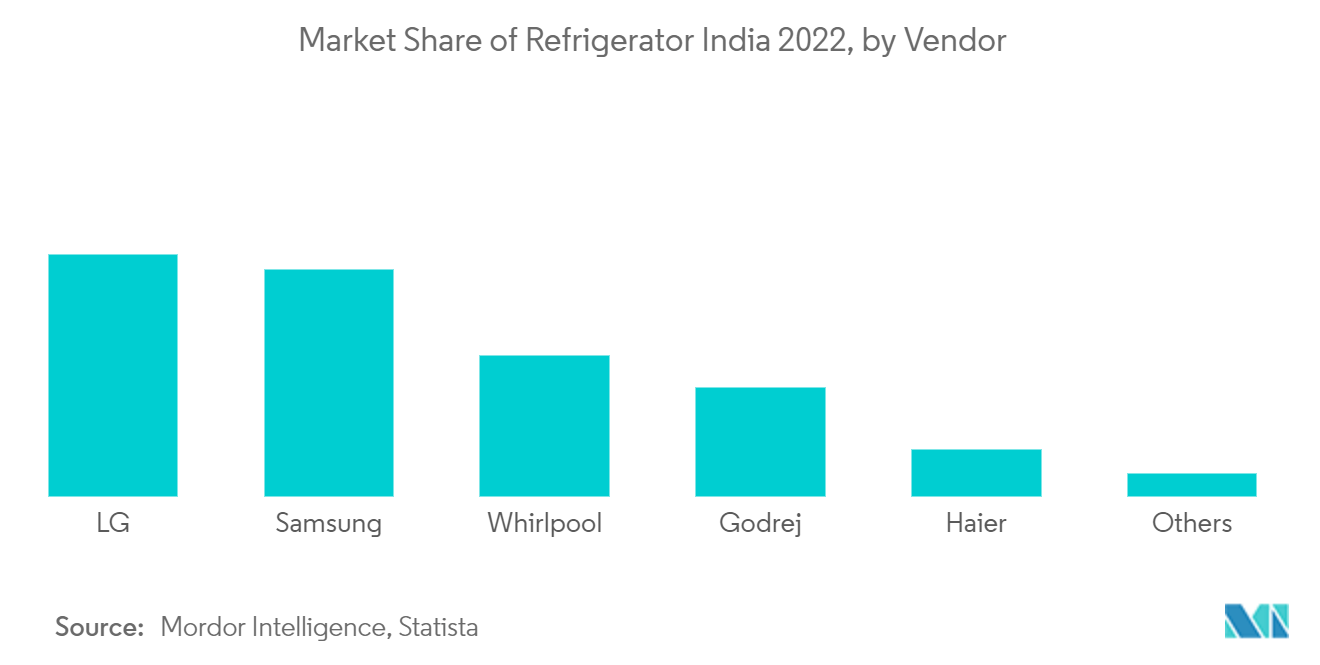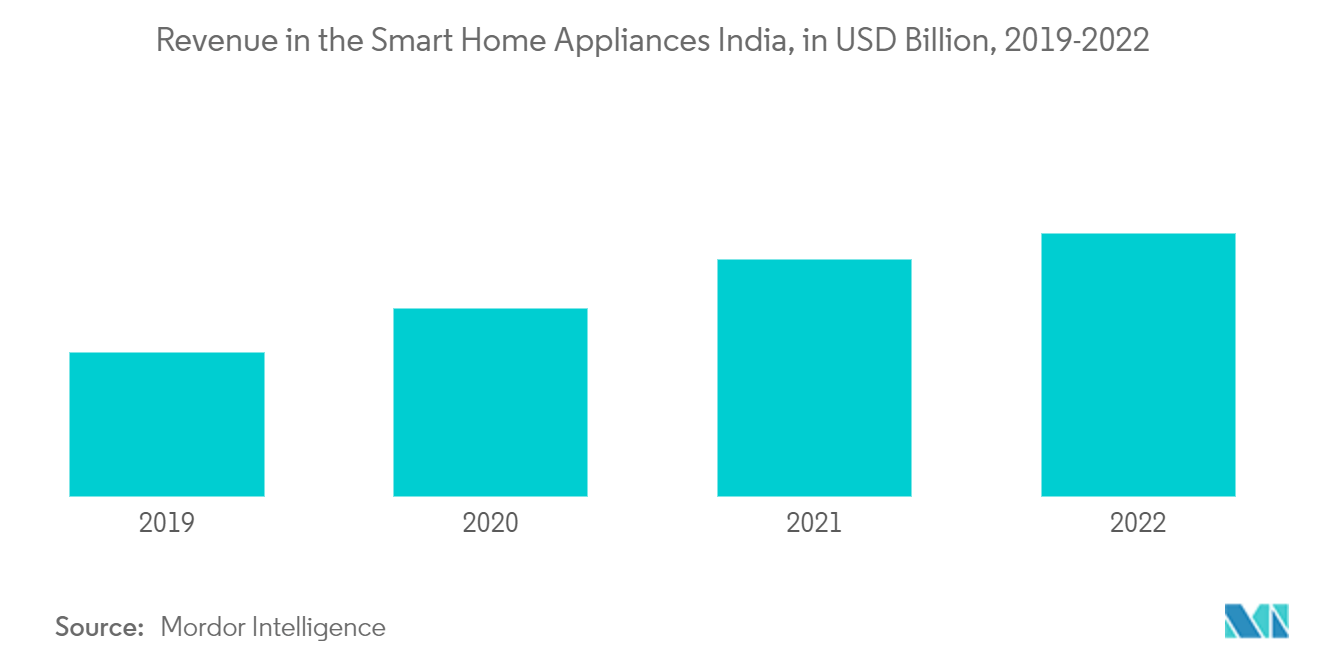Market Trends of India Home Appliances Industry
The Refrigerators Segment Accounts for a Significant Market Share
Refrigerators are regarded as a safe, simple, and practical method of preserving food and food goods. Rising disposable income, the availability of smart and energy-efficient refrigerator units, and the expansion of nuclear families are all driving rising demand for refrigerators for domestic usage. Single-door refrigerators are the most common door type since they are inexpensive, simple to use, and may or may not have an inbuilt freezer.
A remarkable achievement for the Indian refrigerator market, which had a total market value of USD 4,602.6 Million in 2022, were the 13,804 thousand units of refrigerators sold in India. In the India Refrigerator Market, sales of refrigerators with capacities between 200 and 499 litres account for more than 63% of total sales revenue. Indian customers have adopted new technology more frequently as a result of their progress, including connected and intelligent refrigerators. As a result, producers are increasing the number of products they sell, including refrigerators with smart features like Wi-Fi connectivity, voice control, and temperature sensors. These features enhance user experience and persuade customers to switch to more contemporary devices. With manufacturers focusing on introducing new technologies, improving their product offerings, and increasing their presence in tier-2 cities, the market is expected to continue to grow at a steady pace in the forecasted period.

Increase in Smart Home Appliances is Driving the Market
The market for smart home appliances is registering healthy growth, driven by the increasing number of smart homes globally and specifically in India, the advancements in home automation, and the rising inclination of people to cook at home. Further, the increasing number of home remodeling or home improvement projects, is spurring the use of smart appliances in households. Smart home appliances are also becoming easy to use with the addition of various functionalities, which are attracting user attention. Also, various developments in wireless communication and IT infrastructure that facilitate easy integration of such appliances and innovations and advancements by leading companies are boding well for the market. The rise of IoT is also facilitating the growth of the market. With the use of IoT, various appliances will be able to interconnect with one another.
Further, growing urbanization, better lifestyles, increasing disposable income levels, and the need for convenience are driving interest in smart home appliances. Smart washing machines lead the market, supported by the growing Internet and smartphone penetration. The convenience and luxury associated with such appliances are driving their demand. Product innovation, new product development, product differentiation, and integration of numerous value-added features are further expected to catapult Indian appliances market demand over the forecasted period.


